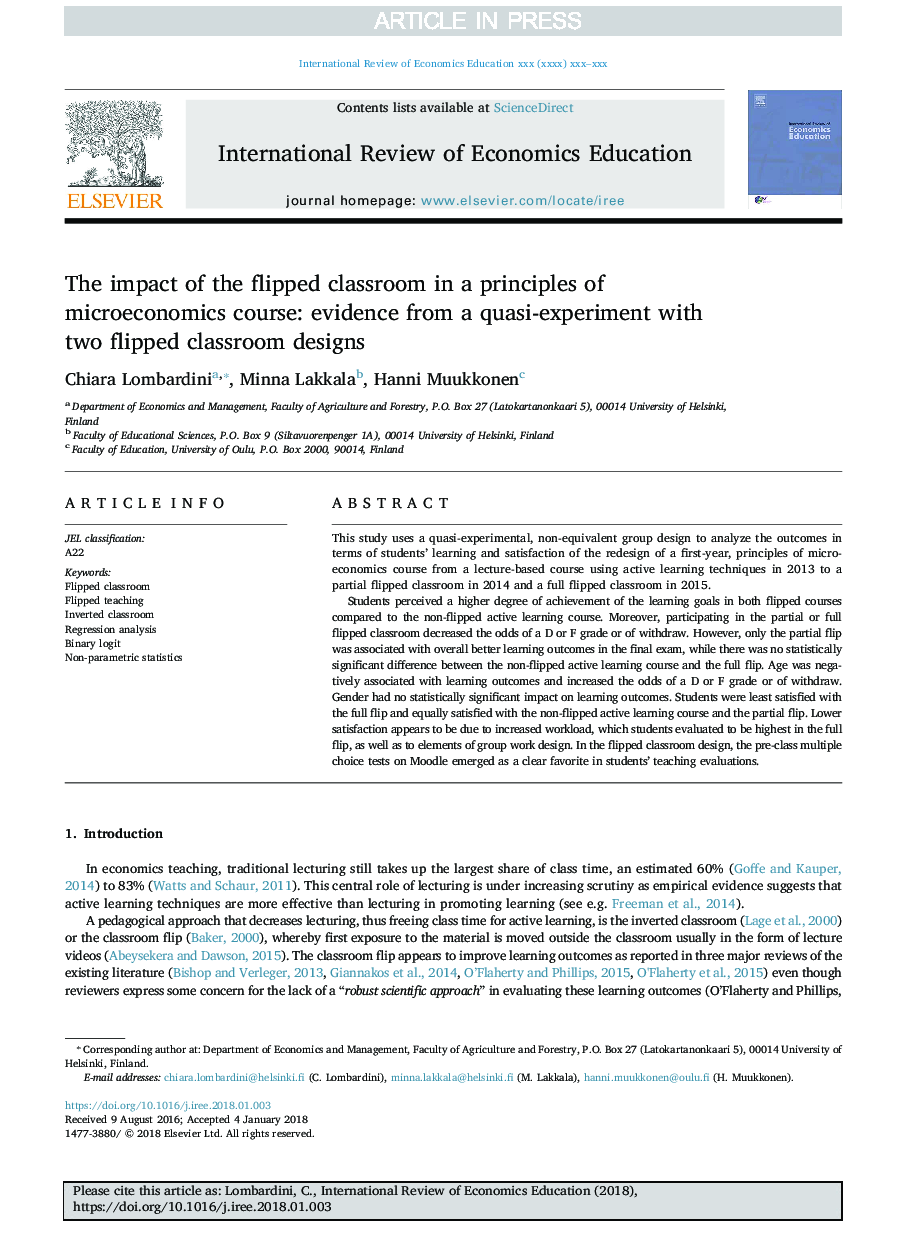| Article ID | Journal | Published Year | Pages | File Type |
|---|---|---|---|---|
| 8960065 | International Review of Economics Education | 2018 | 15 Pages |
Abstract
Students perceived a higher degree of achievement of the learning goals in both flipped courses compared to the non-flipped active learning course. Moreover, participating in the partial or full flipped classroom decreased the odds of a D or F grade or of withdraw. However, only the partial flip was associated with overall better learning outcomes in the final exam, while there was no statistically significant difference between the non-flipped active learning course and the full flip. Age was negatively associated with learning outcomes and increased the odds of a D or F grade or of withdraw. Gender had no statistically significant impact on learning outcomes. Students were least satisfied with the full flip and equally satisfied with the non-flipped active learning course and the partial flip. Lower satisfaction appears to be due to increased workload, which students evaluated to be highest in the full flip, as well as to elements of group work design. In the flipped classroom design, the pre-class multiple choice tests on Moodle emerged as a clear favorite in students' teaching evaluations.
Keywords
Related Topics
Social Sciences and Humanities
Economics, Econometrics and Finance
Economics and Econometrics
Authors
Chiara Lombardini, Minna Lakkala, Hanni Muukkonen,
